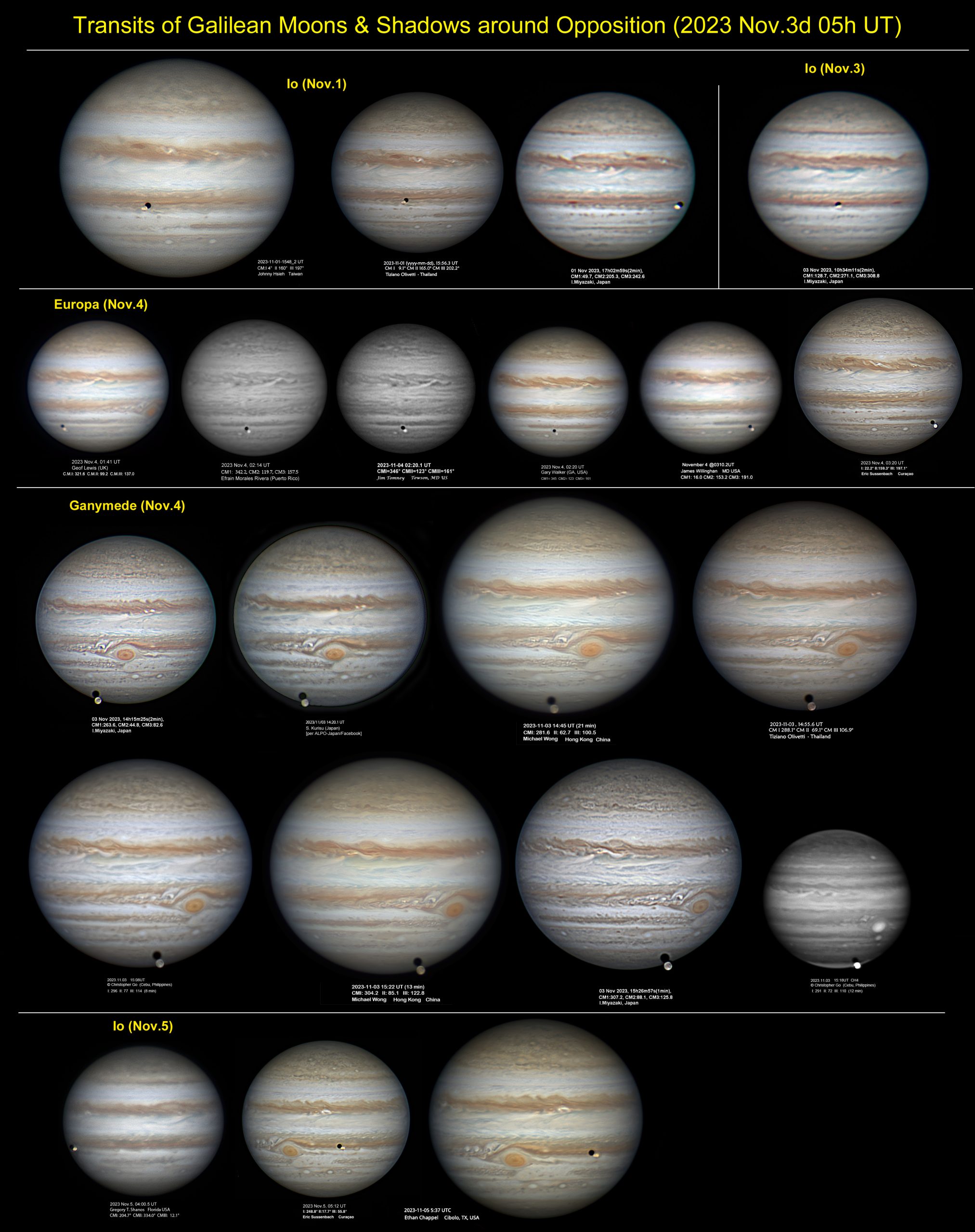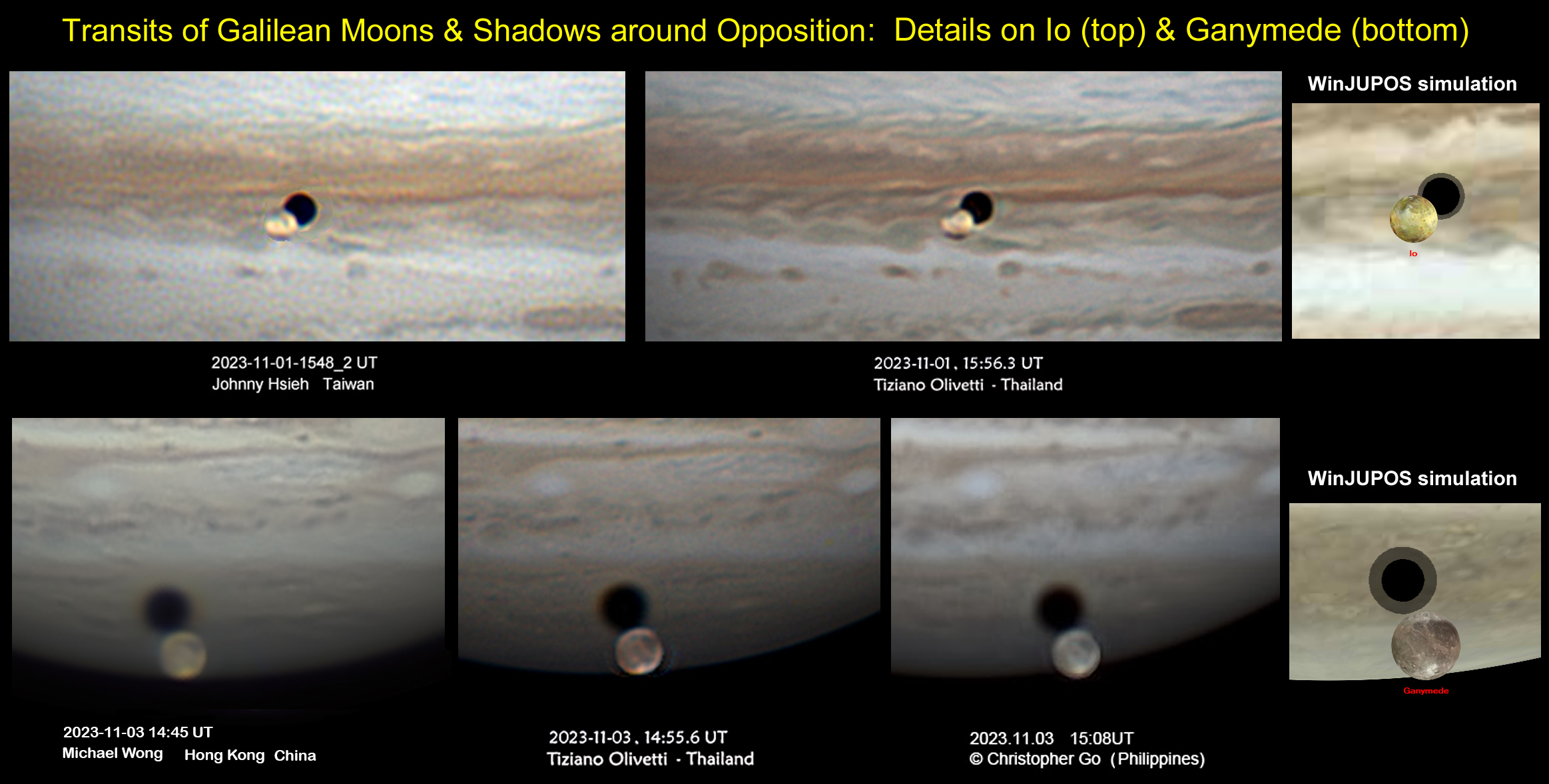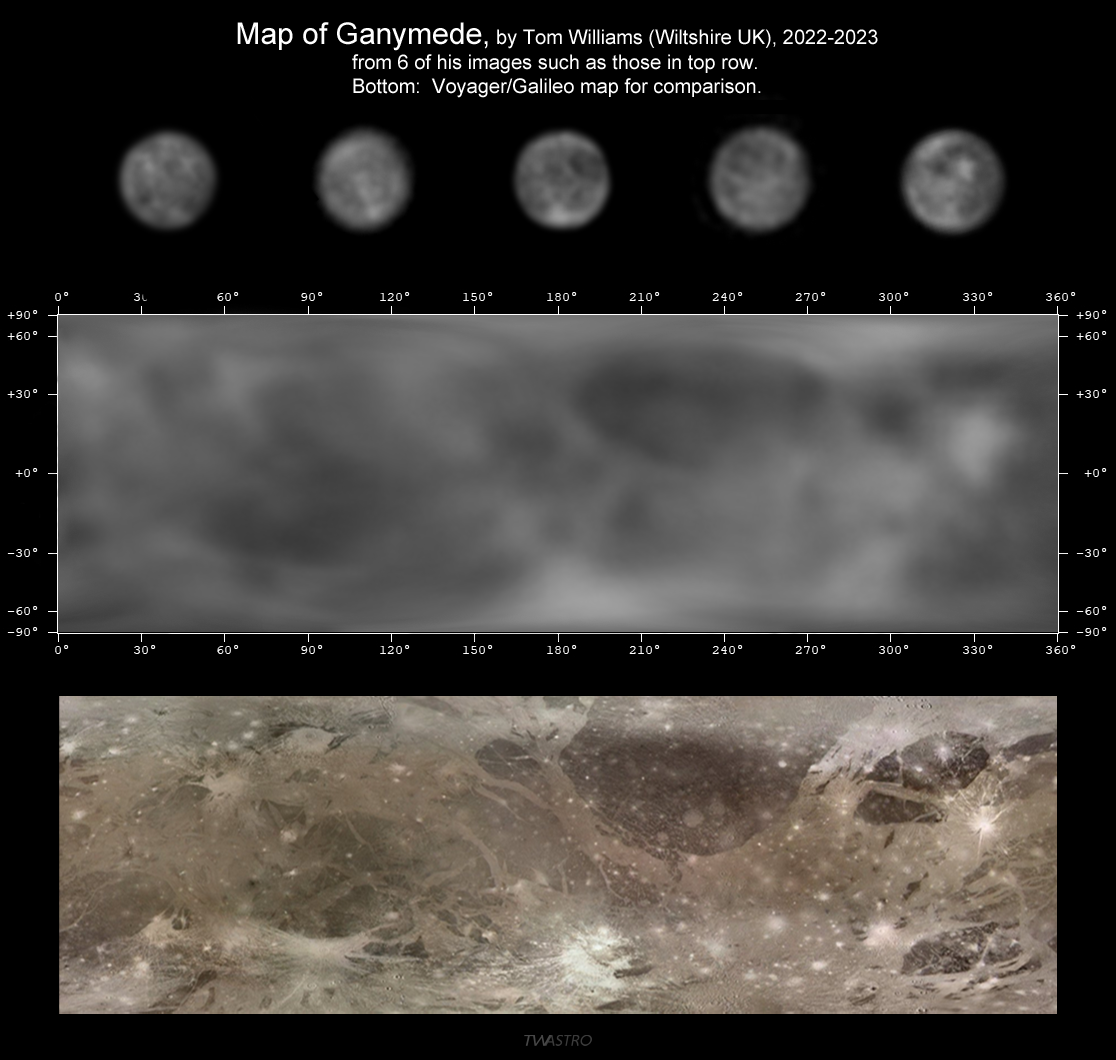Report no.2: The Galilean Moons
Jupiter in 2023/24: Report no.2: The Galilean moons
John Rogers (BAA) (2023 Nov.20)
Here we present some of the remarkable views of the Galilean moons that amateur observers have obtained recently:
Figures 1 & 2: Views of the moons with their shadows in transit over Jupiter at opposition;
Figures 3 & 4: Other well-resolved images of the moons;
Figure 5: A full map of Ganymede from one observer’s work (Tom Williams);
Anim-1: A time-lapse animation of the changing Io sodium cloud over one evening (Chris Hooker).
For comparison with spacecraft views, you can use WinJUPOS, or consult Voyager/Galileo maps with the largest features labelled at: https://britastro.org/jupiter/moonmaps.htm
Each figure is underneath its caption given below. Figures 1 & 3 are reduced for display so the full-resolution versions are given here: Moons_Figs1&3
___________________
Figures 1 & 2: Views of the moons with their shadows in transit over Jupiter at opposition.
Within a day or two of opposition, the moons can transit in front of their shadows. This year, within 24 hours after opposition, there were three such events. Io transited in front of its shadow on Nov.3 from 09:29-11:37 UT; then Ganymede transited adjacent to its shadow from 14:18-15:18 UT, then Europa likewise on Nov.4 from 01:15-03:28 UT. Here are well-resolved images of these events, and others with Io shortly before and after. Note that Ganymede currently makes grazing transits; and its shadow has an extensive penumbra, which tends to be darkened by image processing to make the umbra appear larger than it really is.


Figures 3 & 4: Other well-resolved images of the moons, and WinJUPOS simulations from spacecraft imagery for comparison.
Figure 3: Images by Mike Phillips, Martin Lewis, Damian Peach, & a team at the Pic du Midi (France). Some show Io in transit, when the antijovian hemisphere is always seen. Some show Io and/or Ganymede against dark sky, which makes avoidance of edge contrast much more difficult, but reveals features at other longitudes. Also see Figure 2B in 2023/24 Report no.1.

Figure 4: Images of three moons against dark sky on 2023 Oct.26 by Martin Lewis.

Figure 5: A full map of Ganymede from one observer’s work (Tom Williams).
This map was produced by Tom Williams (Trowbridge, Wiltshire, UK) from six of his images of Ganymede taken in 2022 Aug-Sep. and 2023 Aug-Sep. He used a SW400P telescope (16″ GoTo Dob), 3x barlow, ADC, Uranus-C camera, at 8770mm f/21.5. These were captured in one-shot-colour but converted to mono, then mapped using WinJUPOS. Below, he has provided a Voyager/Galileo map for comparison. Features visible include not only the ancient dark regions, but also several light bands and ray craters, and the whitish north polar cap.

Anim-1: A time-lapse animation of the changing Io sodium cloud over one evening (Chris Hooker). Chris Hooker recently obtained the first amateur images of the sodium cloud that accompanies Io in its orbit [see BAA news item: https://britastro.org/section_news_item/imaging-the-sodium-cloud-of-io]. On Nov.10 he obtained these five images over 4 hours, which show Io (to the right of Jupiter) with the cloud and a jet extending away from it. The jet changes its orientation dramatically during this sequence. Such a jet is a typical feature of the sodium cloud, produced by interaction with plasma trapped in Jupiter’s magnetic field, and its orientation changes as the tilted magnetic field swings past Io with Jupiter’s rapid rotation. Io is moving away from us in its orbit, and the other moons looking leftwards from Io) are Ganymede Europa, and Callisto. (There are also some ghost images of them due to internal reflections.)

| The British Astronomical Association supports amateur astronomers around the UK and the rest of the world. Find out more about the BAA or join us. |
